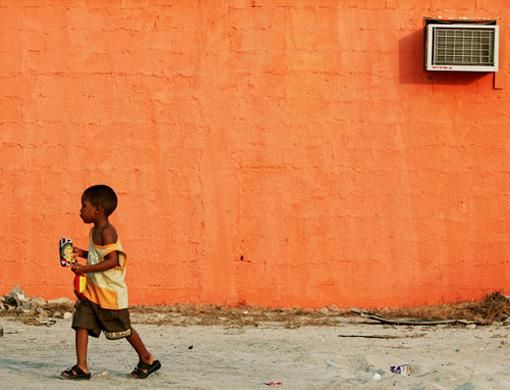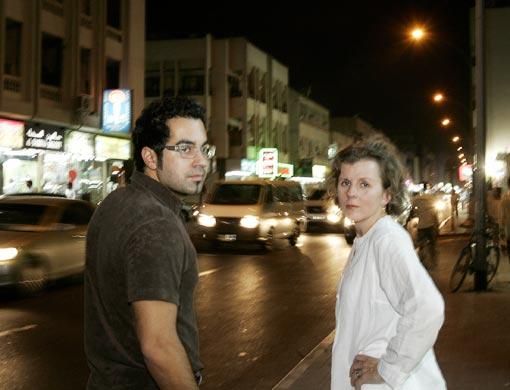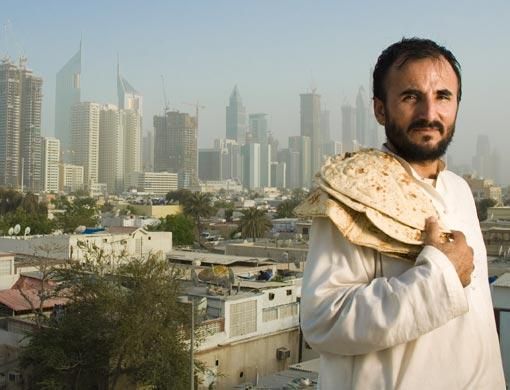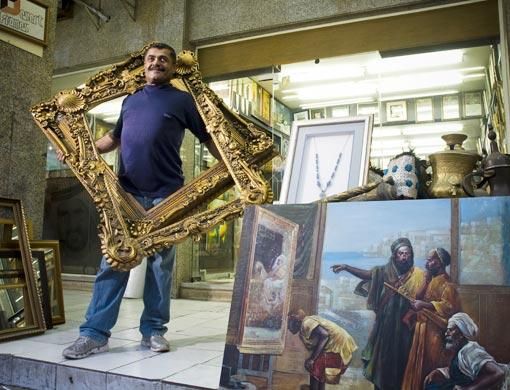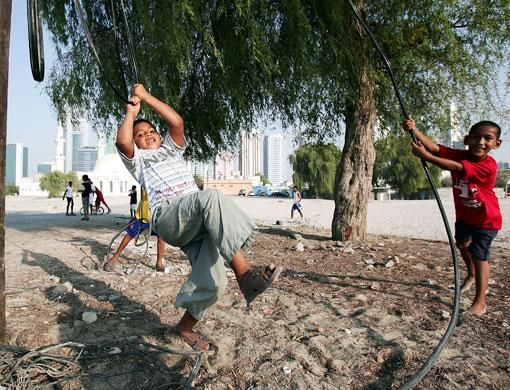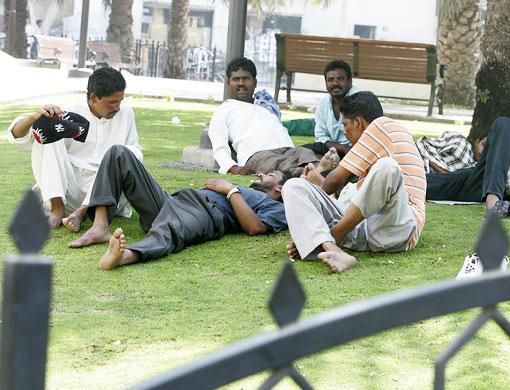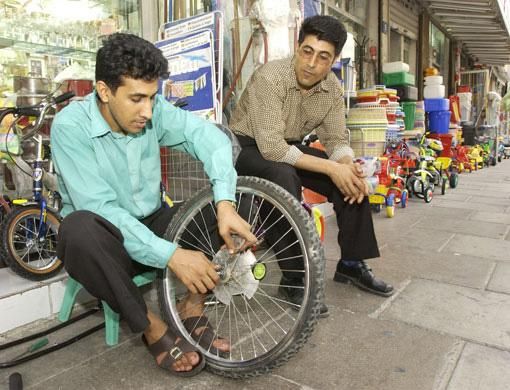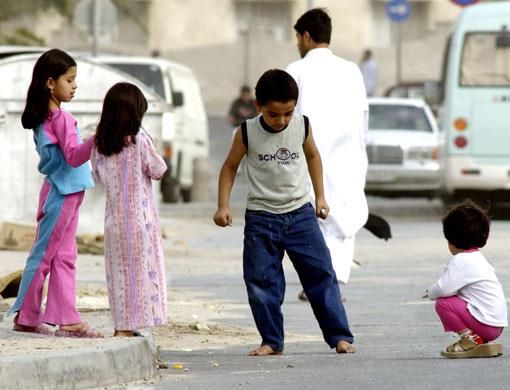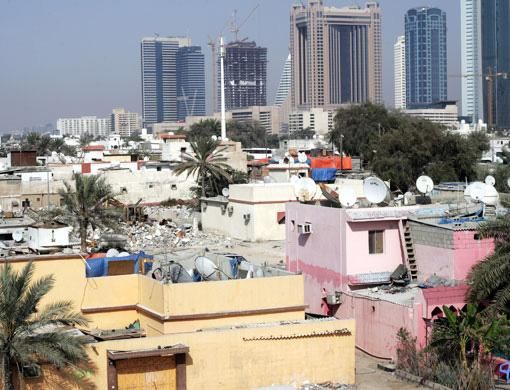On a map of Dubai, Satwa shows up as a tight-knit urban fabric, a dense conglomerate of houses shot through with narrow streets. On the ground, this jumble of buildings conceals an assortment of urban riches.
Satwa is the cheery and cheap go-to place in Dubai for everything: from plants and parakeets to auto accessories and haberdasheries.
Of course, that is about to end.
Large swathes of Satwa are being razed for a new development, Jumeirah Garden City. Once done, the precinct would be transformed into yet another manicured gated community.
Do you have any photos that sum up Satwa? Or any memories you'd like to have preserved for the public? Click here to upload your pictures.
Film makers Mahmoud Kaabour and Denise Holloway are just two of the thousands of people affected by the proposed redevelopment of Satwa. Their loss, while not as severe as the estimated 200,000 people who have lost or about to lose their homes and businesses, was keenly felt.
For the duo, neighbours in an apartment block on the edge of Satwa, the redevelopment is transforming one of their favourite parts of Dubai, a place where they often hang out, go for dinner or head for daily chores.
"Satwa is what makes Dubai a special place. Hemmed by Shaikh Zayed Road, which is postmodern and hi-tech, it is old, traditional and organic. We wanted to pay tribute to a neighbourhood we loved by documenting its special locales and interesting characters," says Kaabour.
Real people
Thus began their three-month long project which culminated in Satwa Stories, to be shown at the Third Line gallery's Pecha Kucha event tonight.
The two film makers started interviewing the people of Satwa in their shops and homes before capturing their stories in a series of poignant photographs.
"We would meet people, talk to them, discover who they are and their dreams. We then tailored the shot based on their real personality," says Kaabour.
These staged pictures required their subjects to always do something - so the end result is fascinating insight into the everyday lives of the Satwa community.
"We set up the photo, spoke to the people, agreed on the action and Sid [photographer Siddharth Siva] was the instrument to make the photo happen. In terms of filmmaking, he played the role of a still cinematographer," says Holloway.
This approach created characters like Satwa Man, the tall and strong Iranian frame maker who becomes a superhero. Satwa Man can balance massive photo frames around his neck, support a family of eight and pay a mortgage too.
Exhibition
For the Pecha Kucha night, they will be showing 19 slides of pictures taken in Satwa, overlaid with a spoken word performance by Kaabour and live music.
Eventually, Satwa Stories is going to be a full fledged exhibition that will be hosted at an art gallery in Dubai next year. "Neither of us thought that a traditional documentary would really work.
It would have been too plain. We wanted to do something more artistic," says Holloway. The final project will feature video installations, photography, live music and multimedia, all based on Satwa as a pretext. Kaabour says it's their way of honouring the neighbourhood and changing it from a place of residence and business to an artistic idea.
Community
What is it that makes Satwa so special? "It is the quintessential pedestrian neighbourhood," responds Kaabour. "You can walk from one shop to another for all your daily needs — from the tailor to the key cutter to Ravi's for dinner," adds Holloway.
"It's a real community. All the shops are run by the people who own them. People talk to each other and know their neighbours — if they run out of change, they get it from the next shop. Satwa also has a high concentration of workers, who hang around the area after work.
"Every nationality has its own favourite hang-out spots, which makes this such a lively place in the evenings. Satwa has a unique dynamic which has not been modelled anymore in the newer neighbourhoods."
Did they encounter any hurdles while taking their pictures? "We were not trying to do an investigative piece, what we are doing is more artistic. It's about the retention of urban memory," says Kaabour.
"Dubai has transient populations and neighbourhoods get redeveloped quite often. If there are no records of what used to be at a particular time, Dubai will be the victim of urban amnesia."
Though people are generally wary of cameras and film crews, Holloway and Kaabour say they were given a warm welcome.
"People quickly espoused what we are trying to do, they tend to see it from the same perspective as us. We weren't there to exploit their suffering. We were there to celebrate them," explains Holloway.
At one stage, they discovered a house filled with hundreds of racing pigeons that the owner bred. "We wanted to shoot something really poetic on the rooftop with the pigeons," reminisces Kaabour.
"However, the roof gave way and they ended up with a picture of the filmmaker's bruised leg along with hundreds of pigeons. "In a way, it was also very organic, because it showed us physically involved with the project."
Urban memory
Their favourite Satwa character? Both agree it is Niyaz, the regal looking Afghan baker, pictured with loaves of bread slung over his shoulder and the spires of Sheikh Zayed Road in the background.
"Initially, he did not quite grasp what we were trying to do or why we wanted to take his picture on the roof, and not in his bakery. But when he saw the pictures, he understood that we were giving him a pedestal that does not exist in the real world. We were taking his picture like we would a CEO in a suit."
What did Satwa Stories teach them? "The project brought the concept of neighbourhood to a new level for us," responds Kaabour.
"Denise and I have been the kind of neighbours who borrow sugar from each other. But we have now broadened the circle and extended that same courtesy to the neighbourhood that lies next to us.
" We wanted to go out and find out how those people are coping, what are their realities. We want to continue to do that and cover many other Dubai neighbourhoods, not necessarily those that are going to vanish."
The makers of satwa stories
Lebanese national Mahmoud Kaabour is a filmmaker, lecturer, curator and DJ, who lived in Dubai from the age of 10 to 16 before relocating to Canada.
A graduate in film from Concordia University, he is best known for his documentary Being Osama, which has won multiple awards and has been televised around the world.
Since 2005, Mahmoud has been based in Dubai where he directs commercially through his company, Veritas Films. His upcoming projects include MetroSufi and the documentary version of Satwa Stories.
Canadian national Denise Holloway is a filmmaker, writer, mother, and enthusiast of all things Satwa. Also a graduate of Concordia University's Film School, she has completed two feature length documentaries and a number of shorts in Canada. A Dubai resident since 2003, she considers Satwa her favourite part of town.
Satwa Stories
Was their labour of love, a project they worked on in their spare time when they walked through the neighbourhood in the evenings. They highlight Satwa's different layers through their presentation.
What is pecha kucha?
Pecha Kucha Night (www.pecha-kucha.org), was a format conceived by Tokyo architects Astrid Klein and Mark Dytham (Klein Dytham architecture). It is a place for young designers to meet, network, and show their work in public.
What makes Pecha Kucha Night different is its crisp discipline. Each presenter is allowed 20 images, shown for 20 seconds each — giving six minutes 40 seconds of fame before the next presenter is up. This ensures that the audience stays engaged and more people get the chance to show.
Pecha Kucha (Japanese for the sound of chatter) has tapped into a demand for a forum in which creative work can be easily and informally shown. Its popularity has grown since 2003 — there are now 100 cities across the world with a Pecha Kucha Night.
The Dubai volume of Pecha Kucha night is hosted by The Third Line gallery tonight from 8.20 pm. For more information call 04-3411367 (www.thethirdline.com)
Do you have a Satwa story? Can you sum up what you love or loathe about the place in 150 words? Send us your Satwa memories by filling in the form below.


